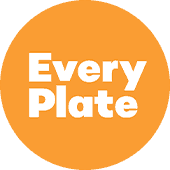The ketogenic diet – keto for short – is a low-carb, high-fat (LCHF) diet. It has a lot in common with other popular diets, such as Atkins and Banting. Keto is associated with many health benefits, and is often used to lose weight.
Before you try keto for yourself, it’s important to be aware of what you can and can’t eat as well as the potential benefits and risks of keto.
Knew Health Members get free access to our health coaches who are well-versed in dietary theories. Scheduled a session with them through the Member Portal to discuss the keto diet or other nutrition topics to stay in the know.
What exactly is the keto diet?
Keto involves replacing much of your carb intake with fat. This puts your body in a metabolic state called ketosis. Because your cells usually use glucose – a carb – for energy, your body will be forced to use fat for energy instead. At this point, your body burns fat for energy instead of carbs, which is said to lead to weight loss.
Keto can lead to lower blood sugar levels and insulin levels. While in ketosis, your body also turns fat into ketones in the liver, which supplies energy to your body and brain.
Since the main goal of keto is to get into ketosis, some people practice intermittent fasting in order to reach ketosis faster.
There are many different kinds of ketogenic diets. Some of these include:
- Standard ketogenic diet (SKD), which contains 70% fat, 20% protein, and only 10% carbs
- Cyclical ketogenic diet (CKD), which involves periods of high-carb eating followed by keto dieting, such as 5 keto days and 2 high-carb days
- High protein ketogenic diet, which includes more protein and works out to around 60% fat, 35% protein, and 5% carbs
The standard ketogenic diet is the most common kind of keto plan to follow.
What can you eat on a keto diet?
In short, you can eat anything that fits your macros – in other words, anything that fits your daily allowance for carbs for the day.
The following foods are commonly used as the main components in keto meals:
- Meat, including red meat, pork, and poultry
- Fatty fish
- Eggs
- Unprocessed cheese
- Nuts and seeds
- Low-carb veggies
- Avocados
- Berries
- Healthy oils like extra virgin olive oil and coconut oil
- Butter and cream
What can’t you eat on keto?
In general, you should avoid high-carbohydrate food.
For the most part, you’ll need to avoid eating the following in order to stay in ketosis:
- Added sugars, including honey
- Nearly all fruit, except for small portions of berries
- Sodas, fruit juices, and high-carb smoothies
- Pastries, cakes, and candy
- Beans and legumes
- Grains and starches, including wheat-based breads, rice, pasta, etc
- Low-fat dairy products
- High-carb vegetables, like potatoes and corn
- High-sugar sauces and condiments
- Processed vegetable oils
- Alcohol
What are the benefits of keto?
One of the main reasons why people follow a ketogenic diet is to lose weight. So far, various reviews – such as this one from 2014 and this one from 2013 – suggests that it is indeed a good diet for weight loss.
What’s more is that many people find keto to be more sustainable than other kinds of diets because many people find it more filling. For some people, it’s easier than other diets as you don’t need to count calories. Of course, this isn’t the case for everybody – it depends on your unique biology.
Weight loss is not the only benefit of keto. Other potential benefits include:
- Managing diabetes and prediabetes
- Managing insulin sensitivity (to prevent diabetes)
- Managing polycystic ovary syndrome (PCOS)
- Reducing blood pressure and blood sugar
- Reducing risk of heart disease
- Reducing seizures in epileptic children
However, keto needs to be researched more extensively before we’re sure of its potential benefits.
What are the risks of keto?
Although there are benefits of keto, there are some risks and side effects, too. Some of these risks are more serious than others.
Signs of ketosis
Some of the signs you’ve entered ketosis are not very pleasant. This can include increased thirst and urination, smelly breath, a lack of appetite, and a headache. These aren’t usually serious, and they usually don’t last long.
Keto flu
Within the first few days of starting keto, you might experience something called “keto flu.” The symptoms of keto flu include diarrhea, constipation, and vomiting. You might also experience sleeplessness and a lack of energy. Many people also find it difficult to concentrate and be productive.
Although it’s not pleasant, keto flu usually only lasts a few days. If it persists, or if you feel extremely bad, it’s wise to stop eating keto and talk to a medical professional.
To reduce your chances of keto flu, ease into keto by eating a low-carb diet a few weeks before. This gently gets your body used to using fewer carbs so that it’s not a huge shock to your system.
The long-term risks of keto
Unfortunately, there are some serious long-term risks of keto. According to research, a ketogenic diet can increase the risk of the following:
- kidney stones
- low protein in the blood
- extra fat in the liver
- micronutrient deficiencies
No matter whether you’d describe yourself as healthy or not, it’s essential to talk to a doctor before trying the keto diet. If you have or have had an eating disorder, it’s important to talk with your therapist and/or doctor before trying any sort of eating plan.
Who shouldn’t do keto?
Because of the risks of keto, it’s not advisable for some people to do the ketogenic diet. For example, if you’re pregnant or nursing, it’s wise to avoid keto or any diet.
If you have diabetes, it’s important to talk to your doctor before doing keto. Although research suggests keto can help manage diabetes, it’s not great in combination with certain medications, and it can have some unique risks for people with diabetes.
Those who have digestive disorders might want to avoid keto too. Because ketogenic eating plans are often low in fiber, it can lead to a range of digestive issues.
Lastly, if you have a history of eating disorders, the ketogenic diet might be a bad idea for you. Before trying any new diet or eating approach, it’s wise to talk to your doctor and/or therapist and disclose your medical history in full.
How to get started with keto
Interested in trying the ketogenic diet for yourself? Here are some top tips.
Collect some meal ideas
Thanks to the popularity of the diet, keto-friendly meal ideas are everywhere. You can purchase a keto cookbook, but there are also plenty of free ideas on keto-specific websites, forums, and Facebook groups. Pinterest is also a great resource.
Clear away the temptations
You don’t have to chuck every non-keto food item out of your house, but be wise about your cupboard. If you know cookies are your weakness, clear them out. If you know seeing a bag of pasta will bring on the cravings for mac and cheese, clear it out.
Your cupboard clean-up can also be an opportunity to do some good – these items can be donated to a local food bank or soup kitchen.
Shop for keto-friendly food
It’s time to make a shopping list and head to the store! To make this easier, consider creating a meal plan and working out what you need from there. Be realistic – don’t buy too many vegetables only for them to expire in a week’s time! Don’t forget to buy some keto snacks, too.
Keep snacks on hand
Some people really struggle with hunger at the beginning of their keto journey. To prevent yourself from snacking on high-carb items, keep some snacks on hand.
Popular keto-friendly snacks include:
- Veggie sticks with guacamole
- Mini frittatas
- A handful of berries and mixed nuts
- Keto-friendly nut butter and dark chocolate
- Bone broth
- Bulletproof coffee
- Pickles and olives
- Boiled eggs with keto-friendly condiments
- Flaxseed crackers with keto-friendly dips, cream cheese, and cold meats
The above components can be mixed and matched to create enjoyable keto snacks. You can make a keto charcuterie board if you’d like. Some items, like bone broth and frittatas, can be made in advance and kept in the fridge as a snack.
You can also purchase keto-friendly versions of cookies and other popular snacks.
Stay hydrated
Drink plenty of water. This will help with some of the uncomfortable keto flu symptoms, curb the thirst that usually comes with ketosis, and keep your body hydrated. If you’re bored of normal water, try sparkling water or a keto-friendly drink.
Join an accountability group
When trying something new nutritionally, it can often be better with a friend (or friends). Whether you rope in your family, roommate, or co-worker, doing keto with others is a great way to hold yourself accountable. The company also makes it more fun.
If you don’t know anyone who is keen to try keto with you, join some online forums! There are tons of subreddits and Facebook groups dedicated to the ketogenic diet.
The ketogenic diet has some risks – but it can be beneficial for many people. It’s important to do your research and consult a professional before trying it for yourself. If you find it tough to go into keto cold turkey, ease into it by trying a less restrictive low-carb diet first.
Working with our health coaches is an affordable way to get access to nutrition experts. They educate and inspire you on your way to a healthier you.
Call our team to learn more at 855-542-0050.
RESOURCES
Bueno, N.B., et al. (2013.) Very-low-carbohydrate ketogenic diet v. low-fat diet for long-term weight loss: a meta-analysis of randomised controlled trials. https://pubmed.ncbi.nlm.nih.gov/23651522/
Cicero, A.F.G., et al. (2015.) Middle and Long-Term Impact of a very Low-Carbohydrate Ketogenic Diet on cardiometabolic Factors: A Multi-Center, Cross-Sectional, Clinical Study. https://www.ncbi.nlm.nih.gov/pmc/articles/PMC4666896/
Kosinski, C., et a. (2017). Effects of Ketogenic Diets on Cardiovascular Risk Factors: Evidence from Animal and Human Studies. https://www.ncbi.nlm.nih.gov/pmc/articles/PMC5452247/
Masood, W., et al. (2021). Ketogenic Diet. https://www.ncbi.nlm.nih.gov/books/NBK499830/
Paoli, A. (2014). Ketogenic Diet for Obesity: Friend or Foe? https://www.ncbi.nlm.nih.gov/pmc/articles/PMC3945587/
Ułamek-Kozioł, M., et al. (2019). Ketogenic Diet and Epilepsy. https://www.ncbi.nlm.nih.gov/pmc/articles/PMC6836058/
Disclaimer: This information is being provided to you for educational and informational purposes only. It is being provided to educate you about how to take care of your body and as a self-help tool for your own use so that you can reach your own health goals. It is not intended to treat or cure any specific illness and is not to replace the guidance provided by your own medical practitioner. This information is to be used at your own risk based on your own judgment. If you suspect you have a medical problem, we urge you to take appropriate action by seeking medical attention.









































